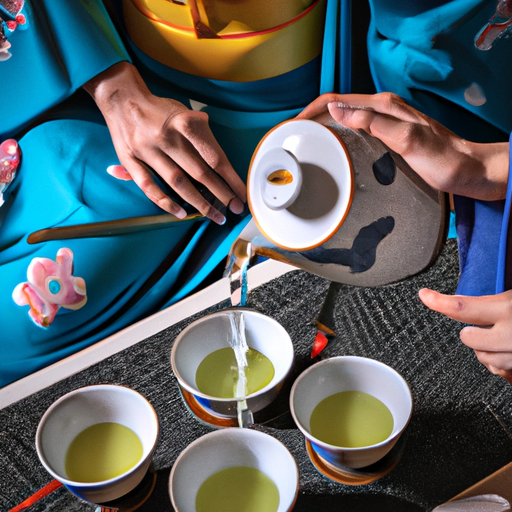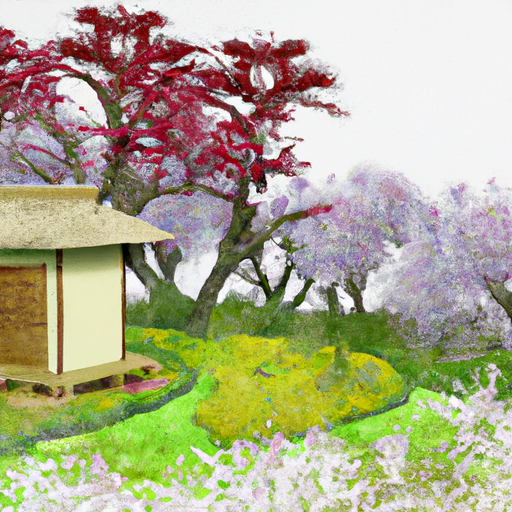You may think that all green teas taste the same, but let me introduce you to a tea that will change your perception forever: Japanese sencha green tea.
Now, I know what you’re thinking – green tea is just green tea, right? Wrong. Japanese sencha is in a league of its own, with its fresh, grassy flavor and unique production process.
This versatile tea is made from cultivated tea bushes that are steamed, giving it a distinct taste compared to Chinese teas. It can range from grassy to sweet, with notes of spinach and kiwi. Plus, it’s packed with catechins, making it a great choice for anyone looking to achieve their weight loss goals.
In this article, we will explore the production and varieties of sencha, including the first sencha of the year called shincha. We will also delve into the potential health benefits of this tea, such as its anti-cancer properties and its ability to prevent neurodegenerative diseases.
And of course, we’ll provide you with some brewing tips to ensure you get the most out of your sencha experience. So, grab a cup of sencha and prepare to be delighted by its versatility and flavor.
Key Takeaways
- Japanese sencha green tea is one of the most important and popular green teas in the world.
- Sencha is made from cultivated tea bushes of Camellia sinensis var Sinensis and is steamed, giving it a fresher, grassier flavor compared to Chinese teas.
- Sencha green tea can have flavors ranging from grassy to sweet, with notes of spinach, kiwi, and more, and usually contains around 20-30 mg of caffeine per cup.
- Regular consumption of sencha green tea may provide various health benefits, such as anti-cancer properties, aiding weight loss, and preventing neurodegenerative diseases.
What is it?
Japanese sencha green tea is a popular and versatile green tea that’s made from cultivated tea bushes and has a fresher, grassier flavor compared to Chinese teas. Sencha green tea comes in a variety of flavors, ranging from grassy to sweet, with hints of spinach, kiwi, and more.
It’s a tea that offers a delightful and diverse taste experience. When it comes to brewing sencha green tea, there are different methods to explore. The tea leaves can be lightly steamed, medium-steamed, or heavily steamed, depending on the desired flavor profile.
The right teapot, cups, and water temperature are also important factors in achieving the perfect brew. Whether you prefer a subtle and delicate infusion or a robust and flavorful cup, sencha green tea has something to offer for every tea lover.
Production and Varieties
Growing, harvesting, processing, blending, and packaging – each step in the journey of sencha’s creation intertwines to craft a symphony of flavors and aromas.
Sencha green tea production is a meticulous process that begins with the selection of the tea bushes. Different cultivars, such as the popular Yabukita, are carefully chosen to achieve specific flavor profiles.
Once harvested, the leaves undergo a series of steps, including steaming, rolling, and drying, to preserve their vibrant green color and fresh taste. The first sencha harvest of the year, known as shincha, is eagerly anticipated for its exceptional flavor and aroma.
After processing, the sencha leaves are blended to create a harmonious balance of flavors. Finally, the tea is carefully packaged to ensure its quality and freshness.
Each step in the production of sencha is crucial in delivering a tea that is versatile, delicious, and filled with the essence of Japan.
Health Benefits
Drinking sencha regularly can contribute to overall health and well-being due to its numerous potential health benefits. One of the benefits of sencha is its potential to aid in weight loss. Sencha contains catechins, which are powerful antioxidants that’ve been shown to boost metabolism and promote fat burning.
Additionally, sencha has been studied for its anti-cancer properties. The high levels of catechins in sencha have been found to have anti-cancer effects by inhibiting the growth of cancer cells and reducing the risk of certain types of cancer.
These health benefits make sencha an excellent choice for those looking to improve their overall health and well-being. Incorporating sencha into your daily routine can be a simple and delicious way to support your weight loss goals and potentially protect against cancer.
Brewing Tips
To achieve the best flavor and aroma, I prefer to brew sencha using a lower water temperature of around 160-170 °F. This temperature range allows the delicate flavors and antioxidants of the tea leaves to fully infuse into the water without becoming bitter. Choosing the right teapot is also crucial for a perfect cup of sencha. I personally prefer using a traditional Japanese kyusu teapot made of ceramic or clay. The porous nature of these materials helps to retain the heat and enhance the flavor of the tea. Additionally, using cotton filters instead of tea bags allows for better water circulation and ensures that the tea leaves have enough space to expand and release their flavors. Here is a table summarizing the brewing techniques for a perfect cup of sencha green tea:
| Brewing Techniques | |
|---|---|
| Water Temperature | 160-170 °F |
| Teapot | Ceramic or clay kyusu |
| Filtering Method | Cotton filters |
| Infusion Time | 1-2 minutes |
By following these brewing tips, you can experience the full range of flavors and aromas that sencha green tea has to offer.
Frequently Asked Questions
How does Japanese sencha green tea compare to other types of green tea?
Japanese sencha green tea is like a vibrant spring meadow, with its fresh, grassy flavor. Compared to Chinese green tea, sencha is steamed, giving it a unique taste. It also offers numerous health benefits, including weight loss support and high levels of catechins.
Can sencha green tea be enjoyed with milk or sweeteners?
Sencha green tea is traditionally enjoyed without milk or sweeteners to fully appreciate its natural flavors. However, if desired, a small amount of milk or sweeteners like honey or sugar can be added to enhance the flavor of sencha green tea.
Is sencha green tea suitable for people with caffeine sensitivity?
Sencha green tea is not suitable for people with caffeine sensitivity. However, there are caffeine-free alternatives such as herbal teas and decaffeinated green teas that still provide numerous health benefits. Consider options like chamomile, peppermint, or rooibos tea.
What is the recommended daily intake of sencha green tea for maximum health benefits?
The recommended daily intake of sencha green tea for maximum health benefits varies, but 2-3 cups a day is a good starting point. Consuming sencha regularly can provide antioxidants, catechins, and potential benefits such as weight loss and neuroprotection.
Are there any potential side effects or risks associated with consuming sencha green tea?
There are no significant potential long-term effects associated with consuming sencha green tea. However, it is important to brew sencha properly to maximize its flavor and health benefits. Preheating teaware and using the right water temperature are key.
Conclusion
In conclusion, Japanese sencha green tea is a truly remarkable beverage with a plethora of benefits. Its fresh, grassy flavor and distinct taste make it a versatile and enjoyable drink for any tea lover.
With around 20-30 mg of caffeine per cup, sencha provides a gentle energy boost to start your day. Moreover, its rich catechin content aids in weight loss goals.
But here’s an interesting statistic: did you know that sencha contains over 300 different flavor compounds? This incredible complexity makes every sip a delightful adventure for your taste buds.
So, why not indulge in the versatile delights of Japanese sencha green tea and experience its many wonders for yourself?










